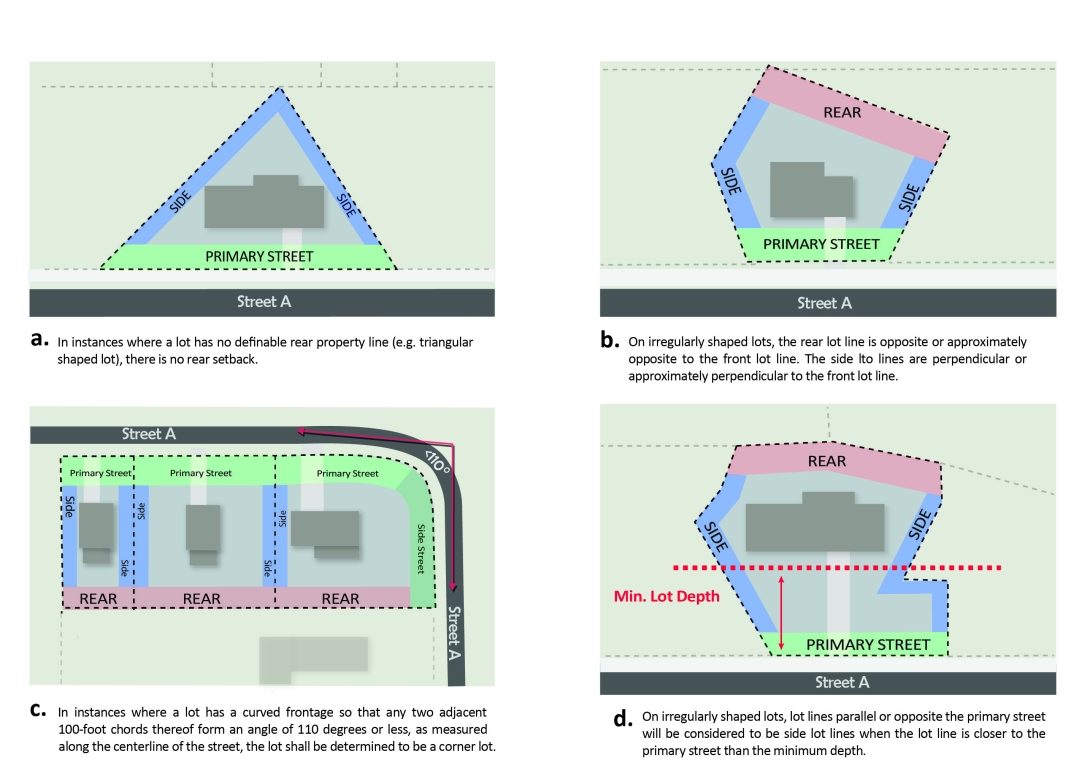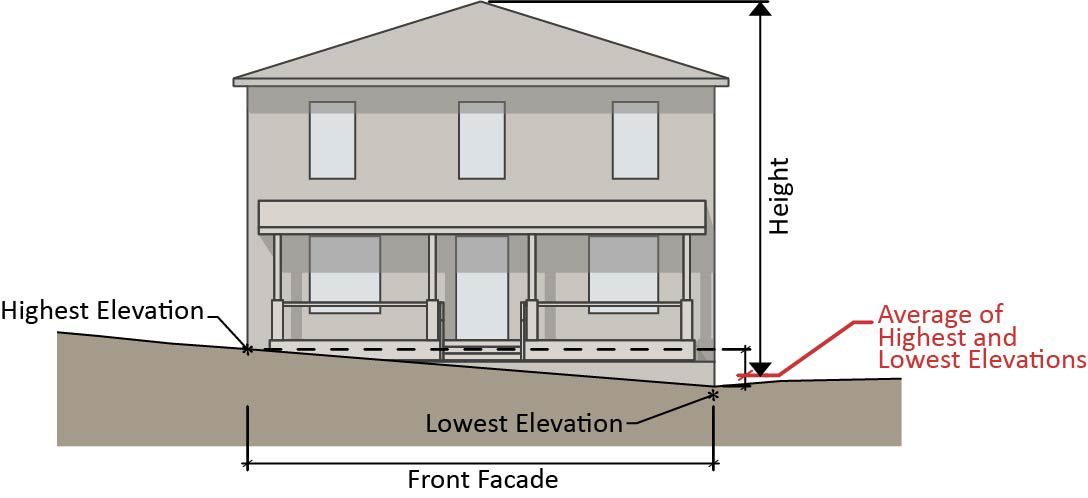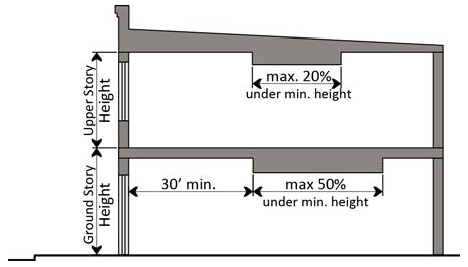A. Defined
A parcel of land either vacant or occupied intended as a unit for the purpose, whether immediate or for the future, of transfer of ownership or possession or for development.
B. Lot Area
Lot area is the area included within the rear, side and front lot lines. It does not include existing or proposed right-of-way, whether dedicated or not dedicated to public use. District density applies, and may require larger lots than those required for an individual building type.
C. Lot Width
Lot width is the distance between the side lot lines (generally running perpendicular to a street) measured at the primary street property line along a straight line or along the chord of the property line. A lot must meet the minimum lot width for the entire minimum required depth of the parcel except for cul-de-sac lots. For townhouse lots that do not front on a public street, lot width is the distance between the side lot lines (generally running perpendicular to the parking lot or drive aisle) measured at the front property line along a straight line. A lot must meet the minimum lot width for the entire depth of the parcel except for cul-de-sac lots.
D. Lot Depth
Lot depth is the distance between the front and rear property lines measured along a line midway between the side property lines.
E. Lot Width and Depth for Cul-de-Sac Lots
Any lot abutting a cul-de-sac in a Residential District where the minimum lot width is not met at the front property line must comply with the following:
- The minimum lot frontage on a street shall be 20 feet (this dimension may be reduced upon approval of the Development Services Director if a common driveway or other form of shared access is provided); and
- The minimum lot depth specified shall not be measured from the front property line, but instead measured beginning from the nearest point to front property line where the lot width equals the minimum lot width for the district. The minimum lot depth measured this way shall be 70 feet in R-1, R-2 and R-4, 60 feet in R-6 and 50 feet in R-10.
F. Density, Lot Area per Dwelling Unit, and Site Area per Dwelling Unit
- Residential density, where applicable, is expressed in units per acre and is calculated by dividing the total number of dwelling units by the gross site area. Unless otherwise specified herein, minimum lot sizes, minimum site areas per dwelling unit, and minimum lot areas per dwelling unit shall be the controlling factors in determining dwelling unit yields.
- Although minimum lot sizes may allow additional units, density, where applicable, serves as the maximum number of principal units per acre. For any lot developed with a Detached House or Tiny House used for Single-unit Living, or an Attached House or Tiny House used for Two-unit Living; one accessory dwelling unit is permitted per lot, regardless of underlying density, minimum lot size, minimum lot area per dwelling unit, or minimum site area per dwelling unit designations. For any lot developed with a Detached House or a Tiny House or an Attached House in a Frequent Transit Area, two accessory dwelling units are permitted per lot, regardless of underlying density, minimum lot size, minimum lot area per dwelling unit, or minimum site are per dwelling unit designations. For any lot developed with a Townhouse, one accessory dwelling unit is permitted per townhouse lot regardless of underlying density, minimum lot size, minimum lot area per dwelling unit, or minimum site are per dwelling unit designations.
- In residential districts, any area required to be dedicated for public right-of-way by the Comprehensive Plan or any area dedicated as greenway, provided that the dedicators waive their statutory right to withdraw the dedication, may be transferred to contiguous property zoned to allow dwelling units. Transfers are restricted to properties under the same ownership which are located outside any Watershed Protection Area and in the same development as the dedication for right-of-way less than 60 feet in width.
- A map showing the property and right-of-way dedication shall be recorded in the Wake County Registry with an indication that the roadway dedication density allowance has been utilized for the particular property prior to recording any subsequent maps in the development.
- No density, lot area, or site area transfer shall be allowed if the developer has executed a reimbursement contract.
- When a site is partly within a CM District, density, lot area, or site area may be transferred from the CM District, which carries the residential density, lot area, or site area minimums of the contiguous zoning district. If more than 1 zoning district adjoins the CM District, the CM District shall be divided by carrying the boundary lines separating the districts into the CM-zoned area.



